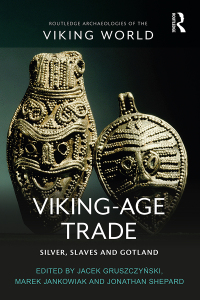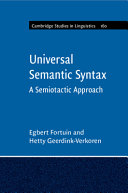Buy Viking-Age Trade: Silver, Slaves and Gotland 1st Edition PDF ebook by author Jacek Gruszczy?ski; Marek Jankowiak; Jonathan Shepard – published by Routledge in 2021 and save up to 80% compared to the print version of this textbook. With PDF version of this textbook, not only save you money, you can also highlight, add text, underline add post-it notes, bookmarks to pages, instantly search for the major terms or chapter titles, etc.
You can search our site for other versions of the Viking-Age Trade: Silver, Slaves and Gotland 1st Edition PDF ebook. You can also search for others PDF ebooks from publisher Routledge, as well as from your favorite authors. We have thousands of online textbooks and course materials (mostly in PDF) that you can download immediately after purchase.
Note: e-textBooks do not come with access codes, CDs/DVDs, workbooks, and other supplemental items.
eBook Details:
Full title: Viking-Age Trade: Silver, Slaves and Gotland 1st Edition
Edition: 1st
Copyright year: 2021
Publisher: Routledge
Author: Jacek Gruszczy?ski; Marek Jankowiak; Jonathan Shepard
ISBN: 9781315231808
Format: PDF
Description of Viking-Age Trade: Silver, Slaves and Gotland 1st Edition:
“That there was an influx of silver dirhams from the Muslim world into eastern and northern Europe in the ninth and tenth centuries is well-known, as is the fact that the largest concentration of hoards is on the Baltic island of Gotland. Recent discoveries have shown that dirhams were reaching the British Isles, too. What brought the dirhams to northern Europe in such large numbers? The fur trade has been proposed as one driver for transactions, but the slave trade offers another – complementary – explanation. This volume does not offer a comprehensive delineation of the hoard finds, or a full answer to the question of what brought the silver north. But it highlights the trade in slaves as driving exchanges on a trans-continental scale. By their very nature, the nexuses were complex, mutable, and unclear even to contemporaries, and they have eluded modern scholarship. Contributions to this volume shed light on processes and key places: the mints of Central Asia; the chronology of the inflows of dirhams to Rus and northern Europe; the reasons why silver was deposited in the ground and why so much ended up on Gotland; the functioning of networks – perhaps comparable to the twenty-first century drug-trade; slave-trading in the British Isles, and the stimulus and additional networks that the Vikings brought into play. This combination of general surveys, presentations of fresh evidence, and regional case-studies sets Gotland and the early medieval slave trade in a firmer framework than has been available before”–





